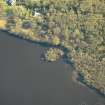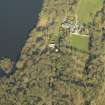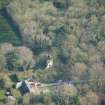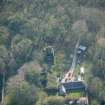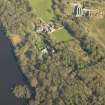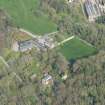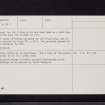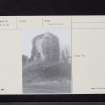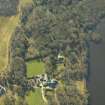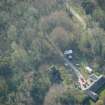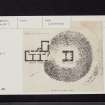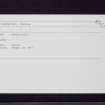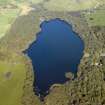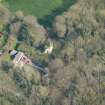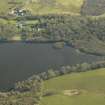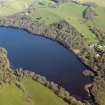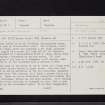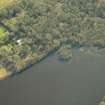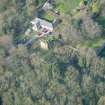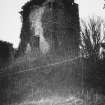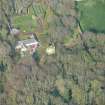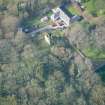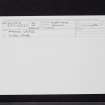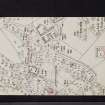Scheduled Maintenance
Please be advised that this website will undergo scheduled maintenance on the following dates: •
Tuesday 12th November from 11:00-15:00 & Thursday 14th November from 11:00-15:00
During these times, some services may be temporarily unavailable. We apologise for any inconvenience this may cause.
Myrton Castle
Castle (Medieval), Motte (Medieval)
Site Name Myrton Castle
Classification Castle (Medieval), Motte (Medieval)
Canmore ID 62795
Site Number NX34SE 5
NGR NX 36016 43275
Datum OSGB36 - NGR
Permalink http://canmore.org.uk/site/62795
- Council Dumfries And Galloway
- Parish Mochrum
- Former Region Dumfries And Galloway
- Former District Wigtown
- Former County Wigtownshire
NX34SE 5 36016 43275.
(NX 3601 4327) Myrton Castle (NR) (Remains of)
OS 6" map (1957)
Myrton Castle is in two distinct, disconnected parts. The original, early 16th century keep, which was probably c.40' high, occupies the summit of a mound, 20' high and 56' in diameter, surrounded by a well-defined ditch 6' deep, though much filled-up - evidently an earlier motte. All that remains of the keep is a fragment, c.22' square, open to the N, it was converted into a dovecot c.1860. At the base of the motte to the N, there is a large area of level ground before it again rises. This has been used to add an extension to the old structure, possibly in the late 17th century, at a level a storey below its base. There is now no structural connection between the two buildings, though one may have existed. What remains of the later building is L-shaped in plan, with a wide stair in the re-entrant angle. It is also fragmentary, except for the E wing which has been used as a dwelling, and was used for storage in 1911.
The lands of Myrton belonged to the M'Cullochs, and it was visited by James IV, c.1511, the property passed to the Maxwells in 1682.
D MacGibbon and T Ross 1892; RCAHMS 1912, visited 1911.
Myrton Castle is as described. The E wing of the castle appears to be of a later date.
Revised at 1/2500 (earthworks only).
Visited by OS (IA) 31 January 1973
NMRS REFERENCE:
Inventory Article No 186
Archaeological Evaluation (3 August 2015 - 8 August 2015)
NX 36016 43275 An evaluation was undertaken at Myrton Castle, 3–8 August 2015. The castle consists of a 15th-century tower on top of an earlier motte, possibly 12th-century in date, with a later range of 17th-century date extending to the north. The castle was partly dismantled c1800 and the tower’s remains converted for use as a doocot. The investigation was intended to address issues relating to the understanding of the structure and the viability of a proposed scheme for reuse of the tower house. The evaluation followed an analytical assessment and historic building survey carried out at the site in 2013.
The evaluation consisted of six trenches in the immediate vicinity of and within the tower ruin, each sited to address specific questions. The excavations revealed that the upper parts of the earlier motte mound comprised a hard dense clay matrix. The bases of the tower’s internal footings were found to have been excavated nearly 1m deeper than the
footing base to the exterior. There was no indication of structural instability within the surviving walling of the E, S and W sides of the tower, or evidence for poor ground conditions on its N side where the tower’s walling had been removed. The loops in the E, S and W walls of the tower were situated immediately above the surface of the motte, above a
projecting footing course; these were more fully revealed in respective trenches. A clay-cut drain with stone capping was found in Trench 3 on the E side of the tower.
The position of the original N tower wall was located in Trenches 1 and 2, although almost nothing of the wall itself or its footing survived. Evidence to suggest the possible position of a stone turnpike stair was identified in the NW angle of the tower, this was possibly accessed by an external
entrance at the N end of the W wall. The N wall of the tower seems to have been deliberately dismantled prior to the addition of the later range in the 17th century. It is possible that the keys of the earlier stair were recycled within the later range. An internal cross wall was built in the 17th-century
range along the line of the original N wall. This wall was later removed, probably in the late 18th century, when other repairs and alterations to the range were evident. The doocot was added in the early 19th century.
Finds from the excavations consisted of 17th- and 18th-century domestic refuse, particularly ceramics and glass, and a 17th-century Dutch coin, with few finds post-dating 1800.
Archive: NRHE (intended)
Funder: Prof and Mrs Watson-Gandy
Elizabeth Jones - Addyman Archaeology
(Source: DES, Volume 17)
OASIS ID: addymana1-222458
































